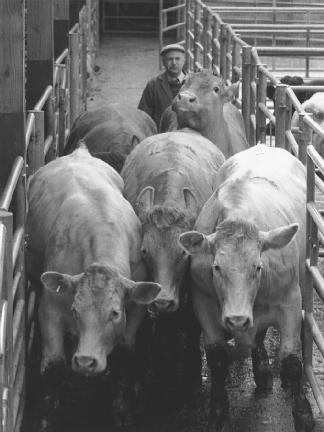Creutzfeldt-Jakob Disease - Description
Before 1995 CJD was little known outside the medical profession. In fact, many doctors knew little about it and few of them had ever seen a case. In 1995 that situation changed, when a new form of the disease was discovered. That form is called "mad cow disease." It seemed that people could contract a new form of CJD by eating beef from cows that had "mad cow disease." Before long, CJD was one of the most talked about diseases in the world. In spite of that fact, relatively few people actually died from the new form of CJD.
Creutzfeldt-Jakob disease was first described in the 1920s. It affects the nervous system and progresses very rapidly. The major sign is dementia (pronounced dih-MEN-sha), or madness. Death usually occurs less than eight months after symptoms first appear.
The disease is very rare. No more than one person in a million is affected by it worldwide. In the United States, CJD is thought to affect about 250 people each year. It occurs in adults of all ages, but is rare in young adults.
Creutzfeldt-Jakob disease belongs to a group of diseases known as spongi-form encephalopathies (pronounced SPUN-jih-form in-se-fuh-LAH-puhtheez). This term refers to the appearance of the brain of a person who develops one of these diseases. Holes develop in the brain that then fill up with liquids, giving it a sponge-like appearance.
Cases of CJD have been grouped into three types: familial, iatrogenic (pronounced eye-a-truh-JE-nik), and sporadic.
- Familial CJD accounts for 5 to 15 percent of all cases. It is an inherited disorder that often does not show up until a person is an adult.
- Iatrogenic CJD occurs as the result of a medical procedure, such as a blood transfusion or organ donation. In these procedures, the patient receives blood or tissue from another person, the donor. In some cases, the donor may carry the agent that causes CJD. That agent can be passed on to the patient during the medical procedure. This source of CJD is relatively uncommon.
- Sporadic CJD is the name given to any case of the disease where the cause is not known. It represents about 85 percent of all cases of CJD.
"Mad Cow Disease" in Animals
Spongiform encephalopathies also occur in animals. The disease that affects sheep is known as scrapie, and was discovered more than two hundred years ago. Other forms of spongiform encephalopathies infect elk, mule deer, domestic cats, mink, zoo animals, and cows. The form that affects cows is known as bovine (for cow) spongiform encephalopathy (BSE).
BSE was first recognized in Great Britain in 1986. Cows infected with the disease behaved in very peculiar ways: they dashed around and acted as if they had gone crazy, hence the name "mad cow disease."
Researchers soon discovered how "mad cow disease" is spread. At one time, the wastes produced in slaughterhouses were used to make animal feed.

That is, the feed given to domestic cows usually contained wastes obtained from the slaughter of other cows. Some of the slaughtered cows were infected with BSE, but they may not have shown any signs of the disease. Like kuru (see box: Kuru Among Cannibals), BSE has a very long incubation period.
By 1988 the British government realized that BSE was a serious problem. Cows had been eating contaminated feed for many years and animal feed companies continued to produce contaminated feed without realizing the dangers involved. The British government made the decision to slaughter all cows believed to be infected with BSE. There were two problems with this decision. First, most cows infected with BSE acted normally. The only way to know that they were infected was to kill them and analyze their brains. Second, BSE had already spread widely through British cattle. By one estimate, 25,000 cows in Great Britain had been infected with the disease by 1992. That number accounted for 1 percent of the total British herd. By 1997 that number had increased to 170,000 cows.
The Jump to Humans
The similarities between BSE and kuru are obvious. Both diseases are transmitted when a person or a cow eats the meat of another member of its species. Early on, medical researchers began to wonder if BSE could mutate (change) in some way so that it would infect humans as well as cows. That is, could it jump the species barrier between cows and humans.
In 1995 this question was answered. Reports began to appear of CJD-like symptoms in a few people in Great Britain. These people were all relatively young adults whose brain-wave tests were similar to those of patients with CJD. The people were diagnosed with a form of Creutzfeldt-Jakob disease called new-variant Creutzfeldt-Jakob, or nvCJD. Patients with this disease lived an average of twelve months, rather than eight. As of 1998, twenty-three patients had been diagnosed with nvCJD.

Comment about this article, ask questions, or add new information about this topic: